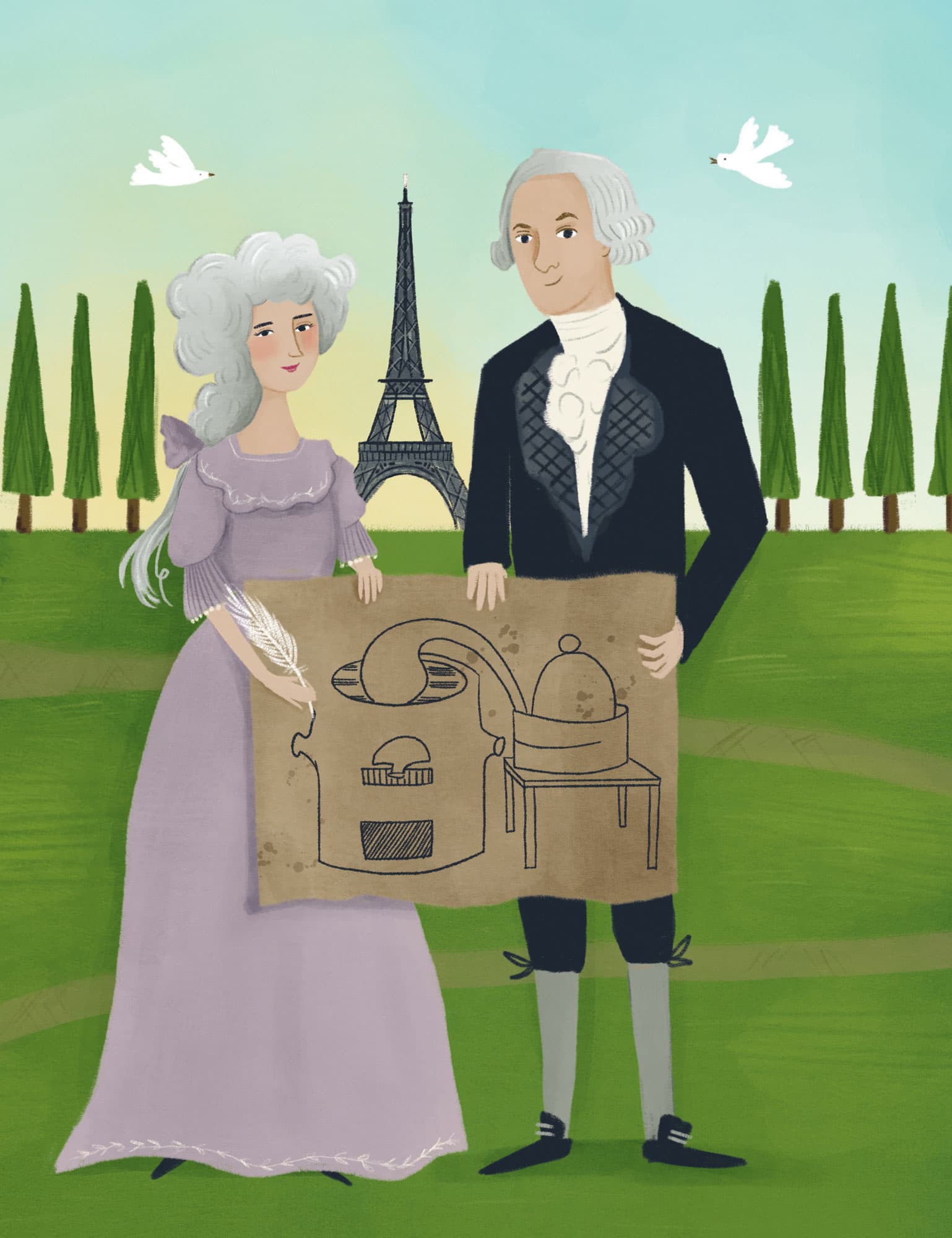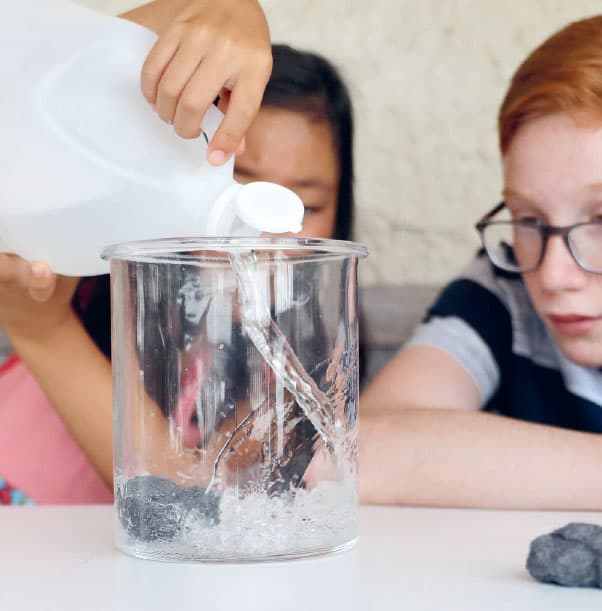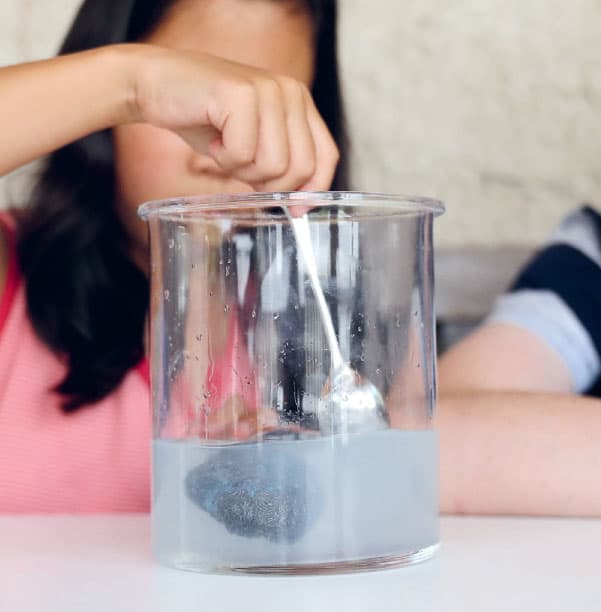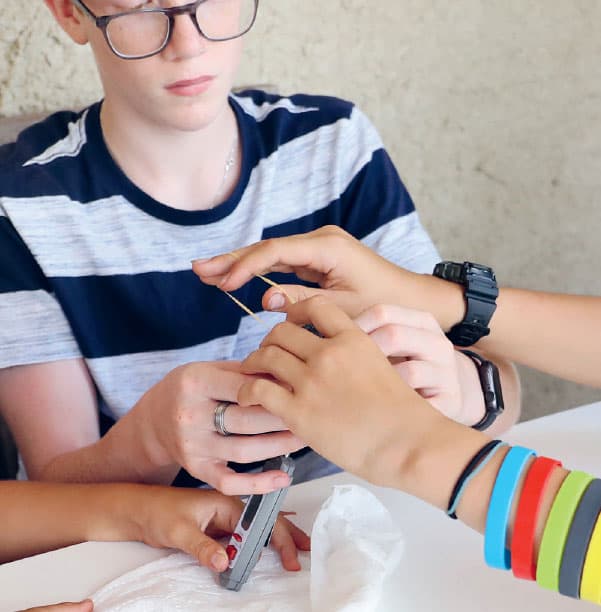LAB 5
Antoine Lavoisier b. 1743
OXIDATION
FIRST MODERN CHEMIST
Antoine-Laurent Lavoisier made the jump from qualitative chemistry, which is descriptive, to quantitative chemistry, which depends on measurement. Besides making a number of important discoveries in chemistry, he saw scientific discovery as a way to improve people’s lives. Tragically his involvement in local government and industry proved fatal in the end, when he was beheaded during the French Revolution.
SHARING HIS WEALTH
Antoine’s mother died when he was only five years old, and he inherited a large fortune. Born to a wealthy Parisian family in 1743, he was educated in the best schools and studied a number of disciplines in college, including math, botany, geology, and astronomy. Lavoisier also earned a law degree, which he never used because he was passionate about science and wealthy enough to pursue it without an income. Believing that public science education was essential to society, he built a laboratory where his less-wealthy colleagues could experiment, and he was involved in the creation of two organizations that worked to educate the public about science.
A PARTNER IN SCIENCE
When he was twenty-eight years old, Antoine Lavoisier married Marie-Anne Pierrette Paulze, who became interested in chemistry, and was trained in science by two of Lavoisier’s colleagues. The famous painter Jacques-Louis David, who would later paint a famous portrait of the Lavoisiers, taught her to make accurate drawings and soon Marie-Anne accompanied Lavoisier to the laboratory each day as his laboratory assistant. In the lab, she took measurements, kept detailed notes, and sketched their experiments. An accomplished illustrator, Marie-Anne also served as his translator because he only spoke French and many important scientific papers of the time, such as those of Joseph Priestley (Lab 5), had been published in English.
QUANTITATIVE CHEMISTRY
Out of all of his extraordinary discoveries, the most groundbreaking thing that Lavoisier did was to measure and record the results of his experiments. Lavoisier designed scales that could measure tiny changes in weight very accurately, and he discovered that in an ordinary chemical reaction, the weight or mass of the substances that reacted was equal to the total weight of the products of the chemical reaction. This allowed him to discover the law of the “conservation of mass” by repeating the experiment over and over, taking precise measurements each time. In 1789 Lavoisier published the first-ever textbook of chemistry based on quantitative experiments.
DISSECTING AIR
Lavoisier experimented extensively with combustion, or burning, which produces chemicals containing oxygen, although at the time, no one knew what oxygen was. Antoine observed that when he burned different substances, although the total weight of ashes and air didn’t change, the ashes were heavier than the starting material, which suggested that they’d combined with something from the air. He also observed that burning different substances produced “air” with different qualities, including breathability and flammability.
A SAD ENDING
Antoine Lavoisier received many awards during his lifetime, but he was beheaded in 1794, during the Reign of Terror in the French Revolution when he was only fifty years old. His laboratory equipment has been preserved for the public in Musée des Arts et Métiers in Paris. Since Lavoisier’s time, quantitative measurement has played an essential role in scientific experimentation.

OXIDATION
Create an oxidation reaction using steel wool and vinegar. Measure the temperature change created by the chemical reaction.
MATERIALS
• 2 pads of steel wool (see Resources)
• White vinegar
• 1 or 2 digital thermometers
• 2 clear containers with lids (A plate will work as a cover.)
PROTOCOL
1 Rinse soap out of pretreated steel wool. Cover one steel wool pad with vinegar.

Fig. 1. Immerse one steel wool pad in vinegar.
2 Make sure that the vinegar is soaked through. Fig. 2.

Fig. 2. Make sure that the vinegar is soaked through.
3 Squeeze extra vinegar from the steel wool, dump out the vinegar, and return the wet steel wool to the container. Fig. 3.

Fig. 3. Wring out the steel wool
4 Record the starting temperature on a thermometer. Next, wrap the vinegar-soaked steel wool around the thermometer and secure it with a rubber band. Fig. 4.

Fig. 4. Wrap the vinegar-soaked steel wool around a thermometer and secure.
5 Cover the container with a lid. Watch the thermometer to see what happens to the temperature. Record the temperature every 30 seconds until the temperature stops climbing. Fig. 5.

Fig. 5. You may see condensation on the container.
6 The temperature rises as the steel wool oxidizes. You may see moisture condense on the inside of the covered container. Fig. 6.

Fig. 6. Cover the container and observe the temperature change.
7 After a few hours, reddish rust will be visible on the steel wool. Allow it to dry and continue to rust. In a few days, it will disintegrate into red dust if you put it in a plastic bag and crush it with your fingers. Fig. 7.

Fig. 7. Rust will form on the steel wool.
